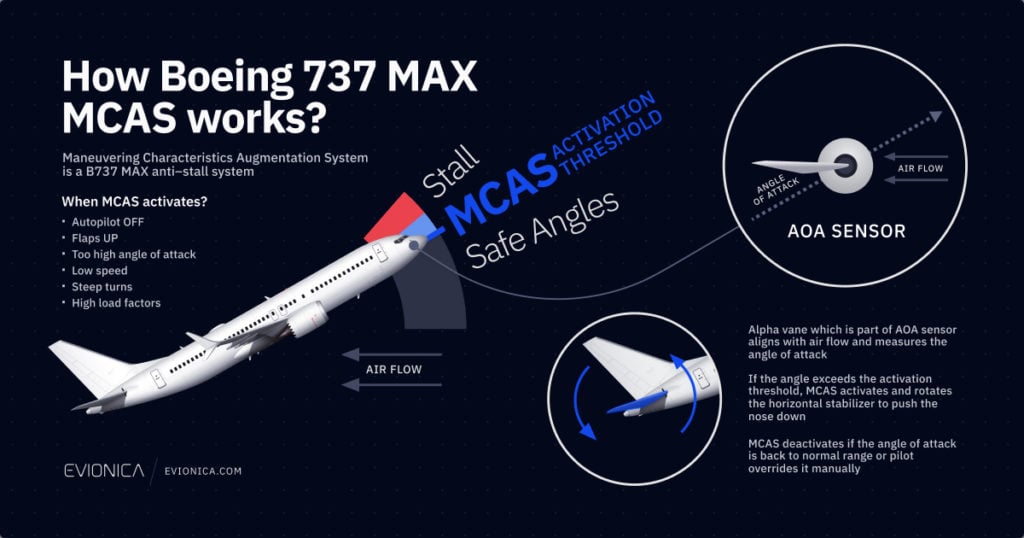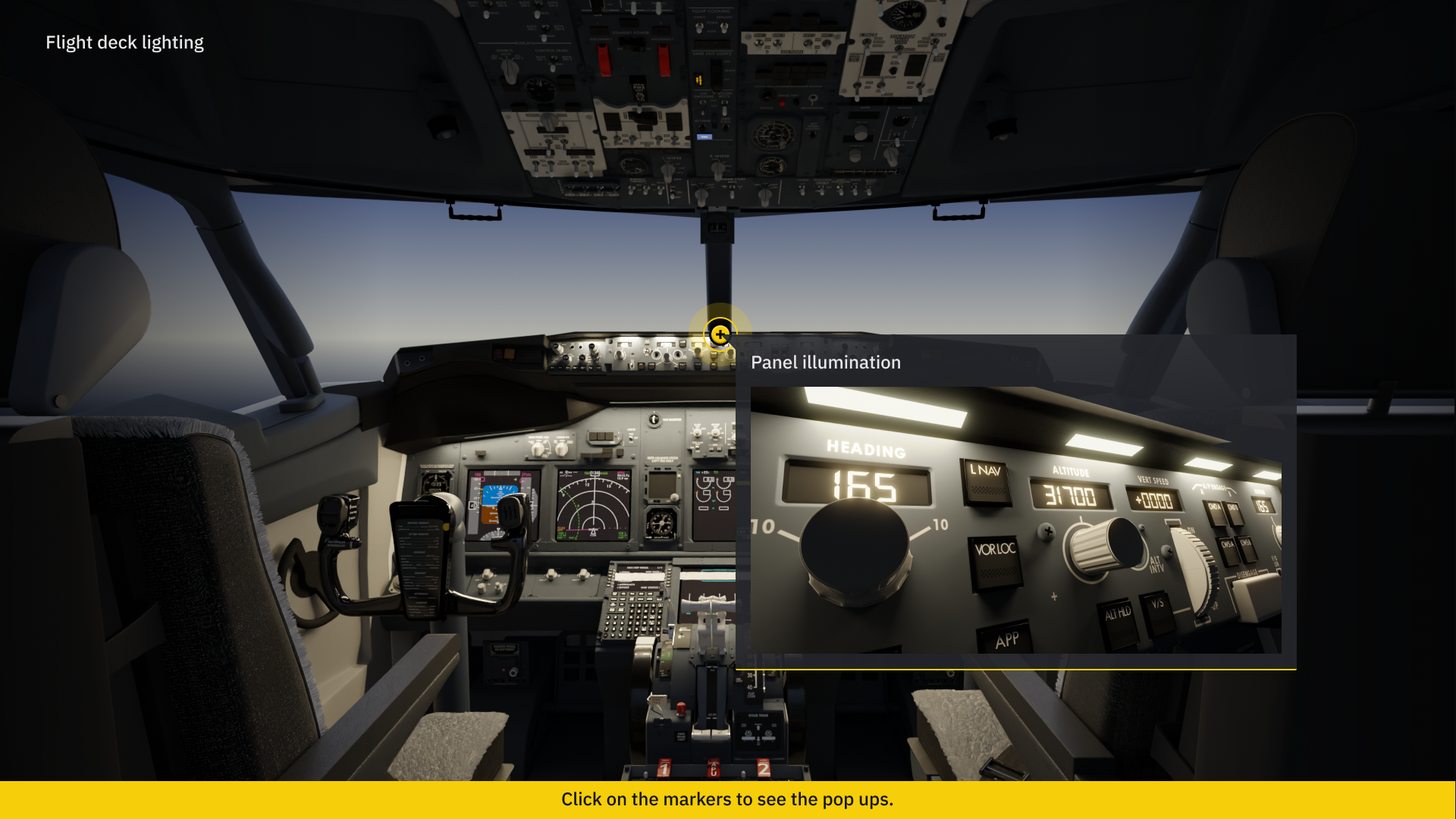Maneuvering Characteristics Augmentation System (MCAS)
The Maneuvering Characteristics Augmentation System (MCAS) prevents stalls in specific flight phases and aircraft configurations.
It was developed and implemented on the Boeing 737 MAX‑8 and ‑9 because these aircraft are equipped with new engines which are attached to the wings higher and further forward than in previous models such as 737‑800. The engines of the MAX series are also heavier, provide more thrust and have a redesigned shape of the nacelles. All the modifications listed above cause an upward pitching moment especially during initial climb with maximum take‑off power. In order to meet the certification requirements, the 737 MAX had to be protected from the effects of such unsafe aircraft behaviour in flight by the introduction of a new MCAS system.

The principle of operation is based on automatically applying a nose‑down trim during low‑speed flights at high angles of attack (AOA) with flaps retracted or in steep turns with high load factors in order to enhance pitch characteristics and increase speed of the aircraft. The nose‑down trim is achieved by moving the horizontal stabilizer upward at a rate of 0.27 degrees per second until reaching the limit of 2.5 degrees deflection. The magnitude of the stabilizer input depends on the current aircraft speed at the actuation. It is lower at high speeds and greater at low speeds.
The MCAS is autonomous and therefore it is activated after the airplane’s AOA exceeds a threshold which is calculated based on the airspeed and altitude regardless of pilot action provided the autopilot is disengaged. The system uses airplane’s input data such as airspeed, angle of attack, angle of bank, flaps position, load factor and more. The values are measured by means of angle of attack sensors (also called Alpha Vanes), Pitot probes, static ports, accelerometers and other airplane systems. They are sent to the Air Data Inertial Reference Unit (ADIRU) and then to the Flight Control Computer (FCC). The MCAS deactivates when the AOA is below the threshold and back in normal range. The system can also be temporarily deactivated by the pilot by using the electric stabilizer trim switches on the yoke to override the MCAS.
If the threshold AOA of the airplane is still exceeded, MCAS will command another incremental stabilizer nose‑down movement 5 seconds after thumb switches are released until reaching the nose‑down limit. The pilot can permanently disable the MCAS by operating both STAB TRIM CUTOUT switches located on the central pedestal and setting them to CUTOUT position in accordance with the procedures described in the Runaway Stabilizer Non‑Normal Checklist (NNC).
Since there is a risk of erroneous inputs from the AOA sensor leading to uncommanded nose‑down stabilizer trim in order to avoid a stall during manual flight, flight crews must be familiar and follow existing procedures regarding Runaway Stabilizer to properly counteract this abnormal condition which can cause fatal after‑effects. An example of erroneous AOA data leading to a crash with no survivors is the Lion Air flight 610 and Ethiopian Airlines flight 302. As a response to both catastrophes within less than 5 months and due to safety concerns all 376 Boeings 737 MAX were grounded for an indefinite time period until a flight control software enhancement notifying the pilots of an AOA sensor failure and crew training including updates to the MCAS will be implemented.
Trusted by aviation businesses around the world


Our support center
Your business is covered by our Support Center ready for help support@evionica.com
